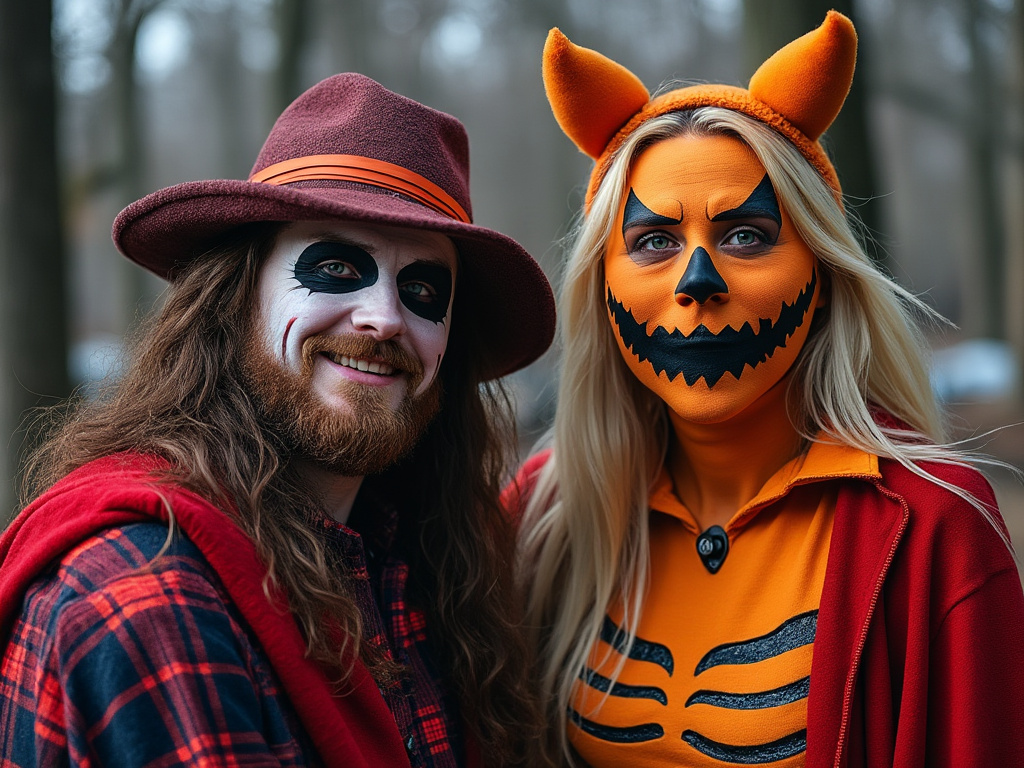Halloween is a magical holiday filled with costumes, candy, and creativity, making it a perfect opportunity to create memorable, language-rich activities for young English learners. Incorporating Halloween-themed lessons can build excitement, boost engagement, and help students practice English in a fun, relaxed environment. From vocabulary and storytelling to crafts and songs, here are some fantastic ways to make Halloween an unforgettable learning experience for your students!
1. Spooky Vocabulary Building
Introduce a list of Halloween-related words, such as “pumpkin,” “witch,” “ghost,” “costume,” and “monster.” Engage students with activities to reinforce these words:
- Picture Match: Show images of Halloween items, and have students match them with vocabulary words.
- Word Search or Crossword Puzzle: Create a word search or crossword using Halloween vocabulary to make spelling practice enjoyable.
- Flashcards & Actions: Show flashcards with Halloween words, and let students act them out. For instance, when showing a “ghost” card, students can pretend to be ghosts by waving their arms and saying “Boo!”
Fun Fact: Did you know the word “witch” comes from the Old English word “wicce,” which means “wise woman”?
2. Halloween-Themed Storytelling
Storytelling is a wonderful way to expand vocabulary, practice listening, and spark creativity. For Halloween, consider introducing a spooky, age-appropriate story:
- “Room on the Broom” by Julia Donaldson: This popular story about a kind witch and her friends is perfect for younger learners and offers plenty of vocabulary for animals, colors, and Halloween.
- Create-a-Story: Using Halloween prompts, let students come up with their own spooky stories! Start with “Once upon a time, there was a haunted house…” and let students add on.
- Story Sequence Activity: After reading a story, give students pictures that represent different parts of the story. Have them place the images in the correct order to reinforce comprehension.
Teaching Tip: Use storytelling to encourage students to describe characters, predict what happens next, and even practice question phrases like “What happened?” or “Who was in the haunted house?”
3. Halloween Songs and Rhymes
Songs and chants make learning language patterns fun and memorable. Try teaching a Halloween-themed song or chant to reinforce vocabulary and improve pronunciation:
- “Five Little Pumpkins”: This rhyme teaches counting and has simple actions that young learners can follow along with.
- “If You’re a Monster and You Know It”: A Halloween twist on the classic “If You’re Happy and You Know It.” Substitute actions like “stomp your feet” or “growl out loud.”
- Halloween Sound Bingo: Play sounds associated with Halloween, such as the hoot of an owl or a wolf howling, and have students identify the sounds on their bingo cards.
Fun Fact: The “trick-or-treat” tradition began in medieval England, where people would go door-to-door asking for “soul cakes” in exchange for prayers.
4. Costume Dress-Up and Role Play
Letting students dress up in costumes allows for creative expression and role play, which are powerful tools for language practice. Here’s how to bring costume fun to the classroom:
- Guess the Character: Have students dress up or use simple props, then act out their character. Others can guess, saying, “Are you a ghost?” or “Are you a superhero?”
- Create Your Costume: Use paper plates, markers, and basic craft materials to help students make simple Halloween masks or costumes. This hands-on activity not only builds language skills but also fosters creativity and collaboration.
- Role Play Scenarios: Create Halloween-themed role-play activities, like pretending to be at a haunted house or going trick-or-treating, where students can practice common phrases like “Trick or treat!” or “Thank you!”
Teaching Tip: Encourage students to describe their costumes in English, using adjectives like “scary,” “funny,” or “magical.”
5. Halloween Crafts for Language Practice
Crafts are a hit with young learners, and Halloween provides endless possibilities for creativity. Try these simple activities to help students practice instructions and descriptive language:
- Pumpkin Faces: Cut out different shapes (eyes, noses, mouths) for students to assemble their own paper “jack-o’-lantern.” They can describe the shapes or colors they choose.
- Spider Web Art: Create spider webs using black construction paper and white chalk or string. Students can add little “spiders” made from cotton balls and share stories about their spider’s adventures.
- Haunted House Drawing: Ask students to draw a haunted house and label rooms and characters. Have them describe their house using prepositions like “The ghost is in the kitchen.”
Fun Fact: Pumpkins are native to North America, and they were used by early American settlers to make pumpkin pie—a staple dessert that’s now popular worldwide!
6. Trick-or-Treat English Practice
Simulate the trick-or-treat experience in the classroom to give students a chance to practice basic conversational skills:
- Trick-or-Treat Stations: Set up several “doors” or stations where students say “Trick or treat!” and receive a “treat” (like a small toy or sticker). Have them practice saying “Thank you” or answering questions like, “What’s your favorite Halloween candy?”
- Halloween Bingo: Give students a bingo card with different Halloween phrases or vocabulary words. As they visit each station, they can cross off the words they hear.
Teaching Tip: This activity builds confidence in speaking English, and students get a taste of Halloween tradition—even if they’re in a country that doesn’t celebrate the holiday!
7. Simple Halloween Games for Language Skills
Halloween games are a great way to encourage movement while reinforcing language. Try these classics with a Halloween twist:
- Musical Chairs with Halloween Music: Use Halloween-themed songs for a fun musical chairs game. When students are “out,” they must say a Halloween word to rejoin the game.
- Pin the Hat on the Witch: This twist on “Pin the Tail on the Donkey” is fun and easy. Blindfolded students try to place the witch’s hat in the correct spot, building vocabulary for body parts and positional phrases.
- Halloween Charades: Write Halloween words (like “vampire,” “bat,” or “pumpkin”) on cards and have students act them out while others guess.
Fun Fact: Did you know Halloween is believed to have originated from the ancient Celtic festival of Samhain, where people dressed up to ward off ghosts?
Why Use Halloween in Language Lessons?
Halloween activities bring excitement to the classroom and help create a positive, engaging environment where young learners feel more at ease practicing their English. Incorporating seasonal themes allows students to connect with Western culture, and using costumes, games, and crafts ensures that each activity feels like play, not work. By making English learning fun, you’re helping students build confidence, reinforce vocabulary, and practice language naturally.
This Halloween, dive into these activities and watch as your classroom fills with laughter, creativity, and the thrill of learning English! From costume parties to spooky stories, these Halloween-inspired lessons will make language learning a memorable and enjoyable experience for your students.
- Enroll TESOL Certification
- Watch TESOL Webinars



